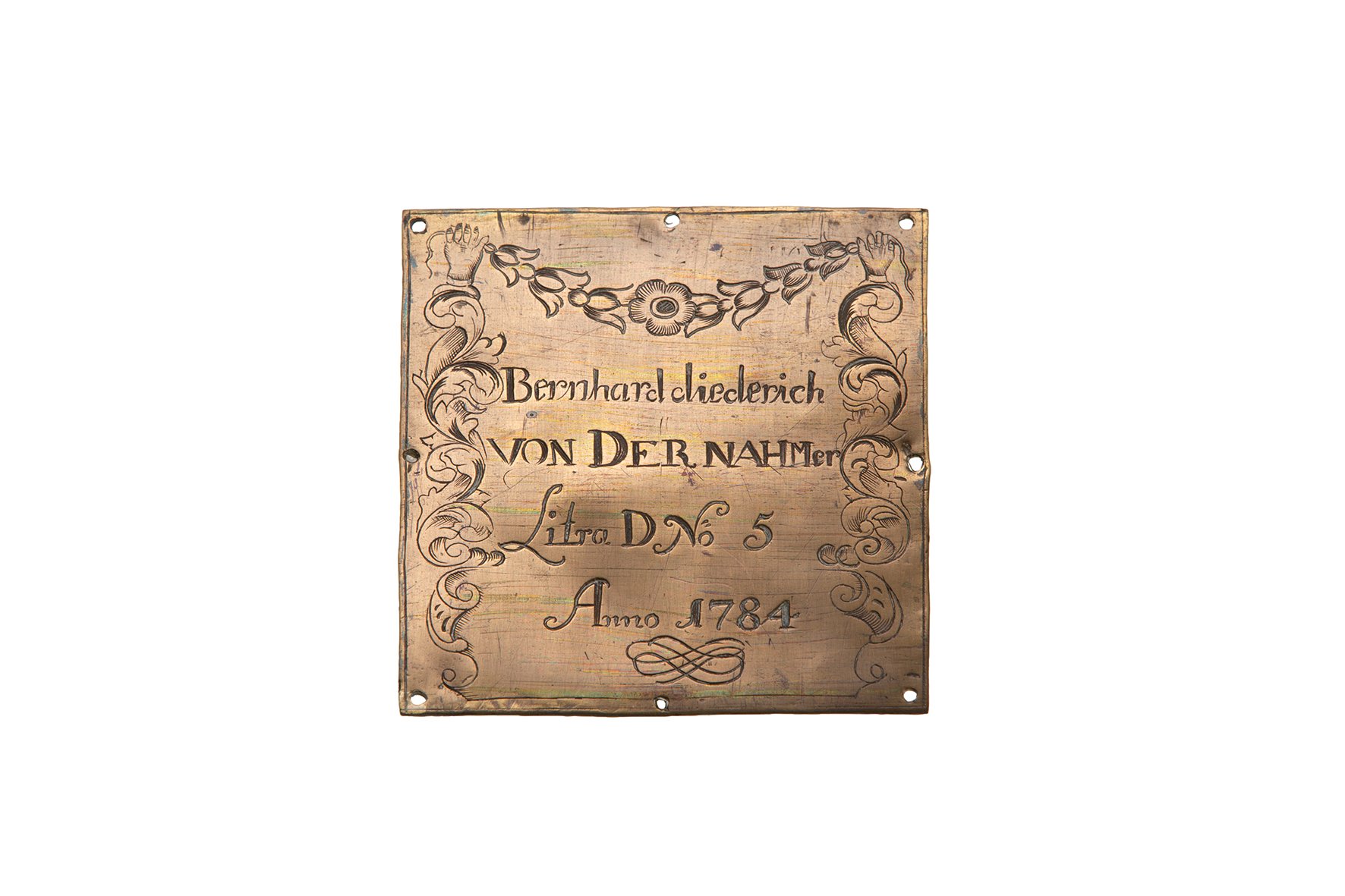Fast quadratisches Messingblechschild mit gravierter Inschrift. 8 Löcher für Anbringung.
Dieses Kirchensitzschild der Obersten Stadtkirche Iserlohns ließ Bernhard Diedrich von der Nahmer (1759-1785) gravieren. Er erbte den Sitz "11" von seinem Vater Johan Peter von der Nahmer, der ihn im Jahr 1774 gekauft hatte und ein eigenes Kirchensitzschild gravieren ließ (Inv.-Nr. 84-531). Damit gehören zwei Kirchensitzschilder der Sammlung zu demselben Kirchensitz - dies konnte bisher für kein anderes Schild nachgewiesen werden.
Ikon. Person. Namen:
von der Nahmer, Bernhard Diederich (der Ältere, 1706-1785)
von der Nahmer, Bernhard Diedrich (1759-1785)
von der Nahmer, Johan Peter (Conrad)
Westhelle, Anna Catharina Elisabeth
en

